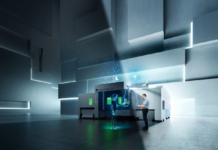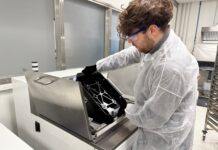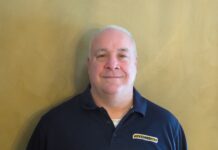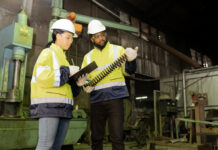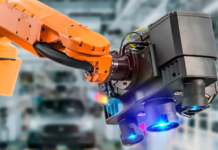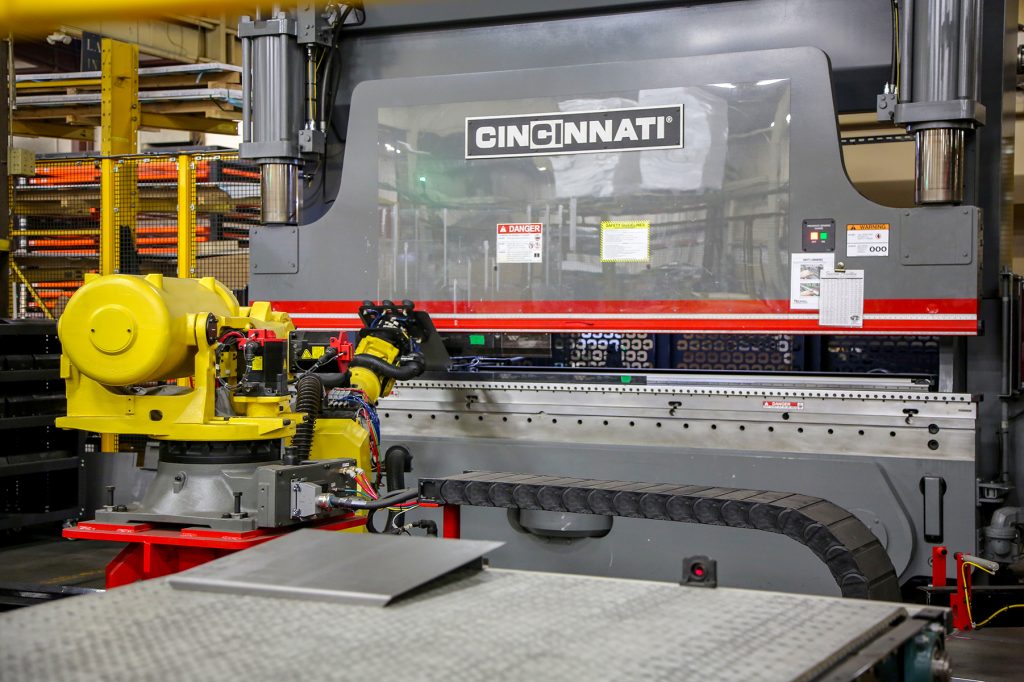 When Chris Curtis took over RC Industries in 1994, the company was in disarray. Fresh off an MBA from the University of Chicago Booth School of Business, Curtis immediately identified a few reasons for the company’s stagnation.
When Chris Curtis took over RC Industries in 1994, the company was in disarray. Fresh off an MBA from the University of Chicago Booth School of Business, Curtis immediately identified a few reasons for the company’s stagnation.
First, RC Industries was choked of capital needs. The new ownership defaulted and had to be removed from the building. Leadership was unmotivated and not willing to put money in. To illustrate, of the company’s four forklifts, three would be broken down at any given moment.
Second—as the forklift example proved—the equipment was neglected. There was no preventive maintenance in place, and the mindset at the time was to wait for things to break, then fix. As for the third reason, it was a simple and powerful one: The quality of management was poor. No cohesion, no proactive behavior and little positivity.
So, Chris Curtis had plenty of work to do when he acquired RC Industries in 1994. A quarter century later, the fabricator of truck tool boxes and custom metal parts is thriving. To get there, it took consistent leadership and investment—and a little help from Cincinnati Incorporated.
While RC Industries is thriving, it’s certainly not without challenges today. Part quality demands are only going up, and more is getting pushed to the supply side. Customers don’t really care how it’s done as long as it’s done right and delivered on time. Accurate machines that produce quality parts the first time, time and time again, are absolutely vital.
On top of those customer demands, Curtis identified two other major challenges RC Industries will battle in the coming years. “First is speed to market,” he said. “How do we accelerate the process from concept to finished product?”
“What we’re trying to get really good at is becoming efficient producers in quantity sizes of one. That’s hard to do. Everything’s a prototype at that point. So it requires a hard look at your process, stem to stern. For your equipment, that means you have to reduce setup times on pieces of equipment, or at the very least, make them simpler and more efficient.”
The second challenge he spoke about was having to work in a labor market that is increasingly less interested in manufacturing careers. Automation helps solve that problem, and if it continues to improve at running smaller lot sizes, it becomes more and more viable to a company like RC Industries.
The challenges are many, they are persistent and they are ever-changing. They can’t be conquered alone. A partner is required. One with knowledge, integrity and a constant willingness to provide unique answers for unique problems.
That’s why, for the past 25 years, RC Industries has counted on the machines, service and support that live at CINCINNATI.
SOLUTION
Before acquiring RC Industries, Chris Curtis gained valuable manufacturing familiarity. From ages 15 to 21, he spent time in a family business on the south side of Chicago. He fabricated parts and built mobile medical units. He knew processes and he knew equipment, and he also knew the CINCINNATI name.
“They’ve been around forever and are a staple in sheet metal work,” he said. “When I came to RC Industries, the CI equipment was similar to what I worked with as a kid. What struck me then as well as now is how heavy and well-made these machines are. They’re built like battleships used to be. There’s just so much iron. It’s not unusual to see a CINCINNATI from the 1940s or 50s that’s still working great.”
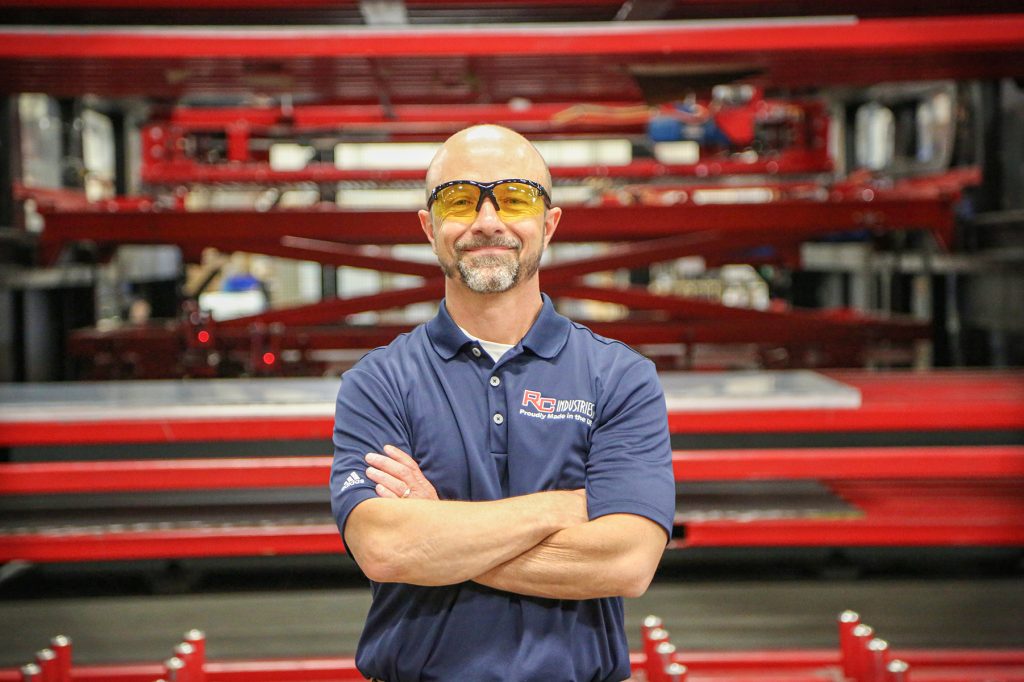 Back in the 1990s, as he made crucial capital investment decisions, Curtis opted for CINCINNATI equipment for three main reasons.
Back in the 1990s, as he made crucial capital investment decisions, Curtis opted for CINCINNATI equipment for three main reasons.
“First and foremost, Made in America is important to me,” he said. “If the solution is inadequate or the pricing is so out of whack that you get forced overseas, so be it. But if I can, I like to purchase U.S. products.”
“Second is durability of the equipment. What we do here makes for a rough environment for machines to live in. The beauty of CI is it’s designed to survive in that type of environment. So much of the offshore equipment sure is pretty, but once you get it in the shop, it doesn’t perform the way you want it to. It’s not built as ruggedly as a CINCINNATI. It’ll look great in the showroom, then underperform in your factory. It’s all designed around “just enough,” but a CINCINNATI has more than enough.”
“Third is the support. CI has always been known to have some of the best techs, people and parts in the industry. If you talk to overseas competition, there are a lot of horror stories about long lead times for repairs. But with CI, they use a lot of common sense, knowledge and market intelligence. They’ve always given us prompt and smart repairs.”
Those three reasons sum up why RC Industries is an unapologetic CINCINNATI shop. Curtis has put his money where his mouth is. As of summer 2019, 12 CI machines reside in his factory: 6 press brakes, 4 laser cutters, 1 shear and 1 automation tower.
RESULT
“Every generation of CINCINNATI laser we bring in is better than the last,” Curtis said. “Our latest purchase, the CL-900 fiber laser with the MARCH automation tower, is literally as productive as two and a half CO2 machines. I’m talking modern CO2 machines, not ones from the turn of the century. Massive productivity gains as well as improved cost of ownership. Uptime, cost of operation, cost of maintenance are all improved.”
“The other example is the MAXFORM press brake. We ordered it with additional stroke, which let us accommodate a product line that we were previously unable to form. We had three different setups on three different brakes, the MAXFORM came in, and we gave it all to that one brake.”
“That’s a real advantage of working with CINCINNATI. When you buy from the competition, what you see is what you get. There are few custom options available. But CI opens it up. If you want additional throat or stroke, they’re willing. You can always get a piece of equipment tailored to your needs.”
The proof is in the numbers. Since 1994, RC Industries has enjoyed an average of 11% annualized growth. That number jumps to 15% if you exclude the great recession years in 2008 and 2009.
The Great Recession in 2008 hit hard, and RC Industries was not immune. During the down market, Curtis had the opportunity to look inward and really examine why he was in the fabrication business. What he realized was that building the right team was the reason he got up in the morning.
Looking around, he saw a lot of highly qualified professionals who had lost their jobs. He scooped them up, and by the time the market came back, RC Industries had the plant, the equipment and, most importantly, the people in place to take advantage.
His emphasis on the team extends beyond his facility’s square footage. He values outside partnerships, and that’s another reason he turns to CINCINNATI. “The amount of open dialogue I have with CI is a difference maker,” he said. “It’s talks with their product managers about our future needs. It’s talks with CI marketing when I have employees moving out of state, and I want them to land on their feet at another CINCINNATI shop. That level of communication, that level of partnership, is more open with CI than any other equipment vendor I’ve worked with.”
“I didn’t realize it in my younger years, but it’s so exciting to see what’s possible when everyone pulls in the same direction. It’s gratifying to bring together a group of people, motivate and lead them properly, and watch what happens.”
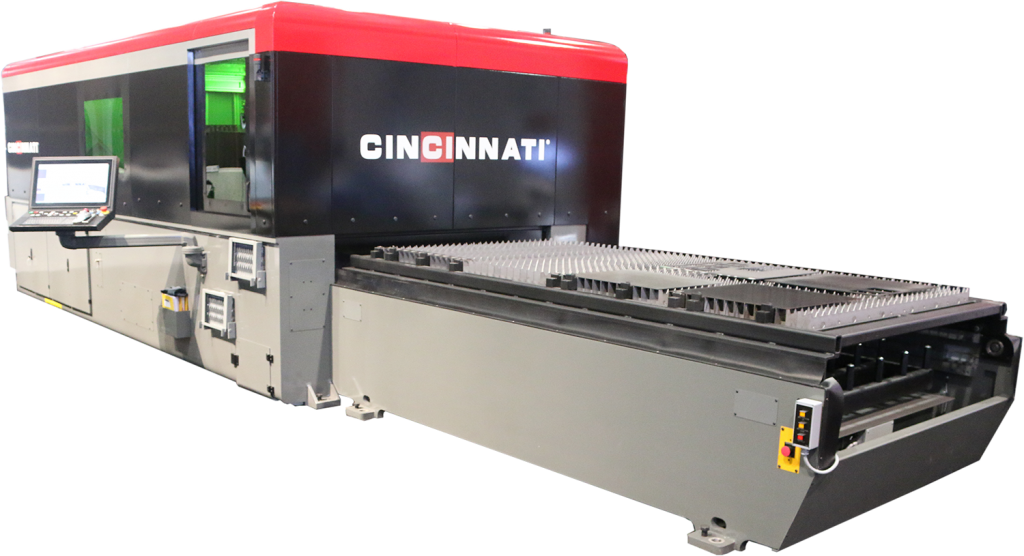 CL-900 Series Fiber Laser Cutting System
CL-900 Series Fiber Laser Cutting System
The CL-900 Series Fiber Laser System from Cincinnati Inc. (CI) delivers on high-speed cutting needs for thinner materials at lower operating costs. nLight’s Corona fiber laser, which features programmable beam quality and rapid tuning of the laser spot size, drives the system, optimizing machine tool performance for processing all metals and thicknesses. To aid the operator in the pursuit of producing good parts, CI developed a human machine interface (HMI) that is intuitive and easy to use. This is made possible through the HMI’s touchscreen display, easy-to-understand buttons and full-size keyboard. The CL-900 is available in a range of table sizes, including 5 ft. by 10 ft., 2 m by 4 m and 8 ft. by 20 ft. It’s also available in a range of power sizes, including 4 kW, 6 kW and 8 kW.
CL-900 Advantages:
Dynamic Power Control (DPC) automatically determines the optimum power and fastest cutting speeds for work orders, eliminating the need to rely on cumbersome tech tables.
Users can switch from small spot size beams to large donut-shaped beams to best accommodate material type, thickness and edge quality requirements.
Maintenance is minimal for the fiber laser source; most service tasks can be accomplished in less than two hours and do not require uninstalling the laser from the machine.
Loss of cut detection, crash protection and long optic life are made possible with the machine’s fiber-optimized cutting head.
About Cincinnati Incorporated
Cincinnati Incorporated is one of a handful of U.S.-based, build-to-order machine tool manufacturers, and has shipped more than 50,000 machines in over 100 years of operation. From a modern 500,000-square-foot plant and technical center on an 80-acre campus near Cincinnati, Ohio, the company engineers and builds machines to the standard of ruggedness required in the North American market – with premium engineering features that stand up to years of rigorous use in demanding environments.

